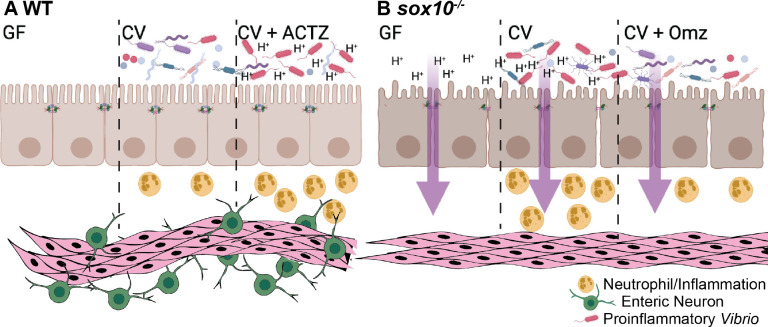Fig 7
(A) WT larvae with an ENS maintain luminal pH in GF and CV conditions. WT CV larvae maintain a healthy balance of microbiota and surveying neutrophils. ACTZ treatment of CV WT larvae decreases luminal pH, driving increased proinflammatory Vibrio abundance and neutrophil influx. (B) sox10 mutants lacking the ENS have decreased intestinal transit, hyperpermeability, and decreased luminal pH in both GF and CV conditions. Decreased luminal pH promotes an increase in proinflammatory Vibrio leading to increased neutrophils and a hyper-inflammatory state. Omz treatment to CV sox10 mutants increases luminal pH, resulting in decreased Vibrio abundance and ameliorated hyperinflammation. Model created with BioRender.com.

